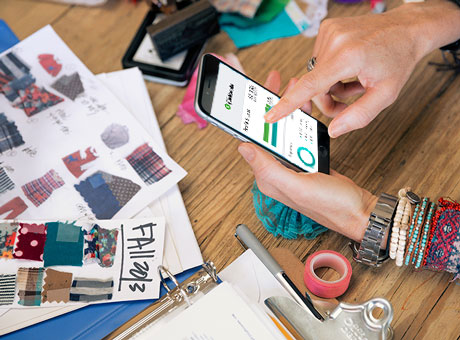Upholstery work is almost always in healthy demand. Many consumers want to salvage antique furniture, repair damage from pets, or repurpose old furniture as a direct response to the consumer shift towards throw-away culture. As a result, an upholstery business can be successful, and it’s a business you can start part-time until you build up your client base enough to quit your day job.

How to Start Your Own Upholstery Business
Invest in Tools
With any trade, you need the right tools to be successful. Specialist upholstery tools include antique staple pliers, arch punches, stitching seam stretchers, button machines and dies, fabric punches, and cutting pads. To save money in the beginning, you may want to start with beginners kit of upholstery tools, or you may want to order the specialist tools as you need them for specific projects. That allows you to build up supplies over time. In addition, you may want some of the following generic tools:
- Cordless drill for tightening furniture frames
- Mitre box saw or electric carving knife for cutting foam
- Claw hammer for removing old nails
- Wire cutters for pulling out staples
- Square for perfecting angles
- Allen wrenches for dismantling furniture
- Saw horses to hold furniture so you can get a better angle for working
Track Expenses
When you start making money from your upholstery business, you have to report your earnings to the Canada Revenue Agency. As a small business owner, you get to deduct your business expenses from your revenue, and that includes startup expenses. As you buy tools, keep all the receipts even though you haven’t had a paying client yet, you can likely write off those expenses. The CRA’s rule on startup expenses is fairly straightforward. If you incur the startup expenses in the same fiscal period that you start making revenue, you can write off the cost. For instance, imagine you spend $500 on upholstery tools in March 2016 but don’t have your first customer until September 2016. When you file your 2016 taxes, you can report the income from September but also deduct the expenses from March. If you don’t get your first customer until the following year, unfortunately, you can’t claim those startup costs.
Create a Work Space
To run a successful upholstery business, you need a place where you can work on furniture. If you’ve got plenty of business lined up, it may make sense to rent a space. If you’re starting small, you may want to use a room in your home or your garage. If you use that space for the majority of your work or if you meet clients there on a regular basis, you can even claim the home office deduction. That lets you claim a portion of your home expenses as a business expenses.
Get Experience
If you’ve been to upholstery school and built up a portfolio of your work, you’re ready to start finding clients right away. In other cases, you may want to refine your skills with a bit of practice before taking on your first client. To practice, buy old furniture from auctions or yard sales, and reupholster it. Then, take pictures of these items for your website and portfolio, and consider displaying the furniture in the space where you meet with clients. You may also offer to do small jobs for free for friends. Consider letting them pay for the fabric and hardware in exchange for your free labour. If the friends like the work, ask them to let their friends know, and in particular, urge them to post photos and a link to your new business on their social media accounts.
Find Support
As your business expands, you will face some unique upholstery challenges. To reach out to other professionals with your questions, you may want to create an online support system. Upholster.com has lots of informational videos and posts as well as a community forum. There are also specialist forums, such as the Hog Ring for auto upholstery professionals and amateurs. Look around and check out a few forums so you can find the ones that are right for you.
Provide Extras
To go above and beyond with customer service, consider offering all of your clients a bit of something extra. For example, make an extra throw pillow with leftover fabric, always give a fabric swatch to clients so they can use it when shopping for other furnishings, or think of other ways to make your service stand out from your competitors. Keep lots of fabric catalogs on hand. If you only have one copy of each catalog, your clients have to look at it in their office. You want to give them something they can take home to make a decision slowly. If possible, you may also want several swatch books, so your clients can take those home as well. Once you’ve got the tools, a place to work, a growing portfolio of samples, and a few clients, you can really start to focus on your business. Take your time and do your best work on each piece. Ultimately, your work acts as the biggest representative of your company, and you need it to shine.


